Xinomavro – The Noble Grape of Greece
I recently came across on social media that November 1st of 2019 will be designated as the first International Xinomavro Day.
My initial response was, “Does not Xinomavro already have it’s own day, considering it’s one of Greece’s most preeminent red grape?”
If you are an ardent fan of Greek wines, you must have heard about Xinomavro. If you are a total newbie to the allures of Greek wines, this should be on your list of the first wines you want to taste.
I have long been a fan of Xinomavro and have been lucky to taste some great ones. Sometimes I get so used to tasting, talking and selling it, that I forget that to a fair number of my readers this is quite an exotic grape.
Few years back a trip to Greece, took me to the north, to the environs of Thessaloniki. Xinomavro makes its home in Macedonia, Northern Greece.
Macedonia covers a big swathe of land in Greece and the grape primarily grows in Naoussa, Goumenissa, Amyntaio and Rapsani. In fact the first region to be granted an appellation in Greece was Naoussa. There are now other regions where Xinomavro is finding interesting expressions. More on that in the future.
It has been often compared to Barolo and that is a very apt comparison. In some hands, it can take almost a Burgundy like quality. No kidding! On first appearance, a 100% Xinomavro will show that jeweled red tone. I also exudes an earthy, perfumey, nose. Like Barolo, it holds a very tight tannic structure. Then, there are the notes of olives, sun-dried tomato tapenade.
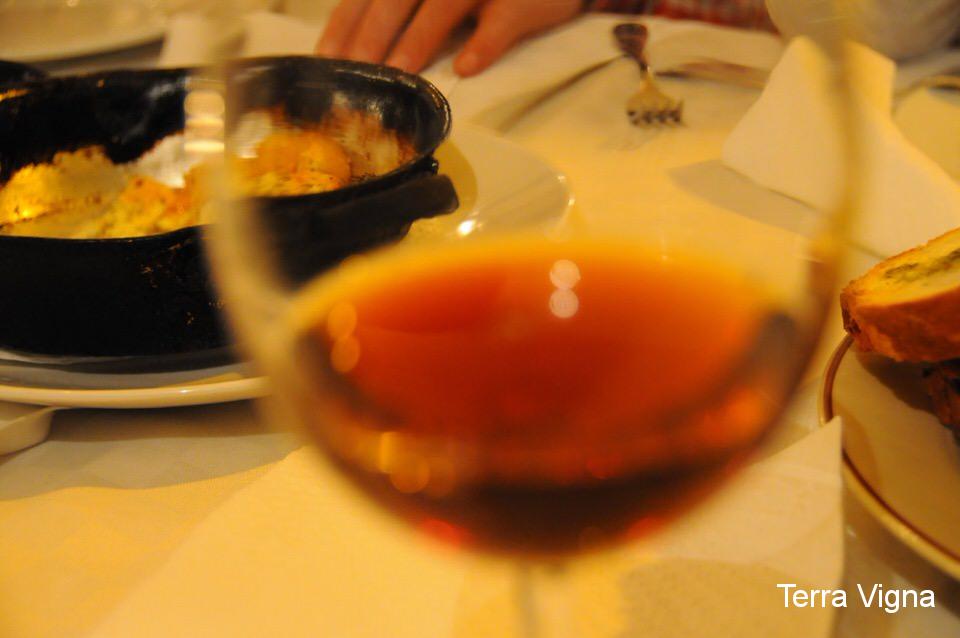
Markovitis
In Naoussa, which was Greece’s first wine appellation, Xinomavro is bottled as a 100% single variety. While many fine examples of Naoussa abound, the one that gets us excited the most, is the one from Markovitis.
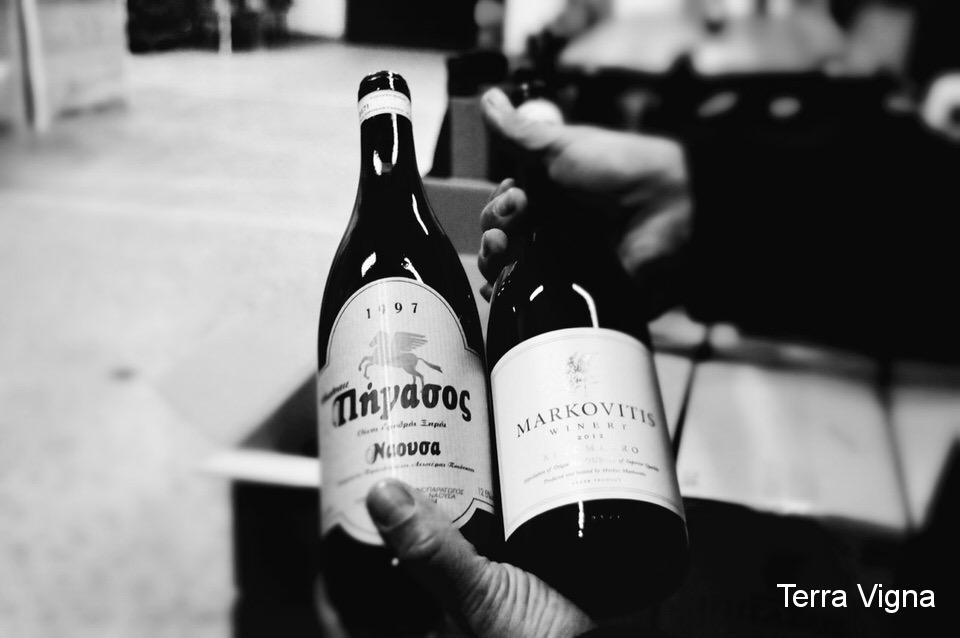
This winery makes just one wine – the 100% Xinomavro. The August 2019 issue of Wine&Spirits summed up this wine perfectly.
“There it is”, sighed a panelist when he came to this wine in the lineup. “That’s what you want out of Xinomavro.” What he was referring to was the pure flavor of cherries, sweet but firm, not at all over-ripe; and the forest-floor scent of dried leaves in early Fall, as well as the mushrooms pushing up through the ground beneath them. And then there’s the burr of the tannins, fruit-filled, yet mouth-sticking, making each sip last for minutes at a time. The 2013 vintage was exceptional in Naoussa, free of extremes, but credit this wine’s greatness to Markos Markovitis, the third generation to run this winery (formerly known as Château Pegasus) who farms just like his father, working his wines organically and making a single wine from them.
Besides the 96 POINTS by Wine&Spirits, the 2013 Markovitis Naoussa also received 90 POINTS from Robert Parker’s The Wine Advocate and 89 POINTS from the Wine Spectator.
Aidarini
In Goumenissa, Xinomavro (70%) is blended with another local variety called Negoska (30%). There are fewer examples better than the Single Vineyard by Aidarini.
This wine is a field blend from what is considered one of the oldest linear vineyard in Greece. The 2011 vintage was served to François Hollande, once President of France.
The 2013 Single Vineyard was rated 91 POINTS by Robert Parker’s The Wine Advocate.
Mark Squires in his review said:
“The 2013 Goumenissa Single Vineyard is a 60/40 blend of Xinomavro and Negoska aged for 22 months in 20% new oak (half French and half “hybrid,” meaning barrels made from both American and French wood). It comes in at 13.5% alcohol. The wood treatment gives this a spicy and vanilla-nuanced feel on opening, but if you air it out for 90 minutes, that improves notably. Then, the structure becomes more impressive. Tightly wound, with controlled power, it never feels insubstantial even though the mid-palate finesse is very good. I liked the 2012, but this seems to have an even fresher and more lifted feel, granting that they are not both here together. This also fleshes out and put on weight with aeration as it tightens on the finish. This should age nicely. At the moment, it is a very nice bargain, but it does need to develop well over a few years to justify my enthusiasm. I’m leaning up, and betting that it will.”
Aidarini also makes a blend of Merlot and Xinomavro. I call it the “gateway wine” for Xinomavro. It’s a perfect segue into the world of Xinomavro.
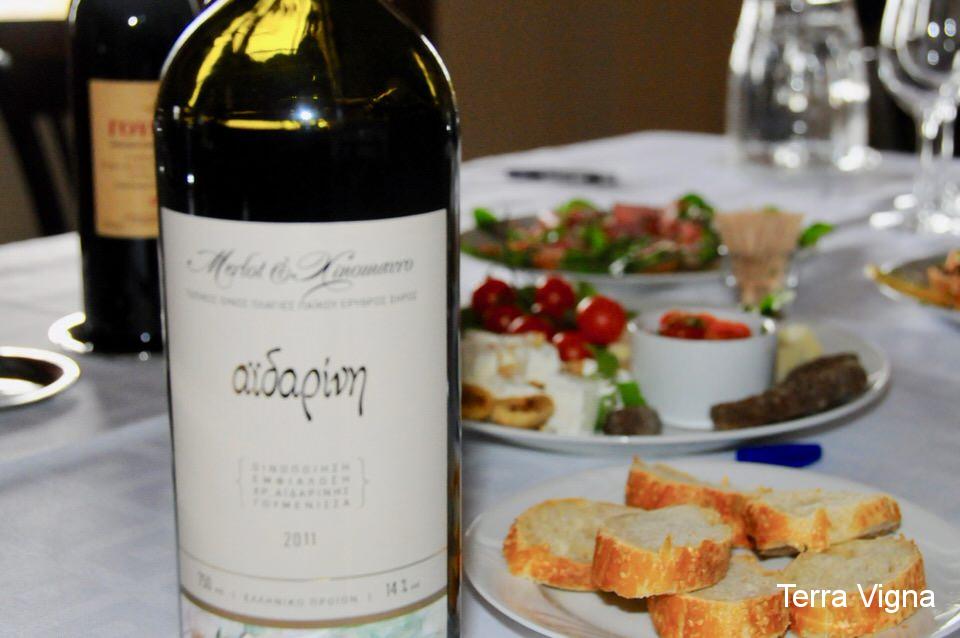
The 2013 Aidarini Merlot-Xinomavro was rated 89 POINTS by Robert Parker’s The Wine Advocate.
Xinomavro, very much like Pinot Noir, can make some compelling rosés. The one by Aidarini has so much flavor and punch packed that when we first tasted it, we called it a Brosé! We expect to bring in a few cases next Spring. Contact us to reserve your cases.
While I have, out of bias, showcased wines that we represent, there is a lot of experimentation going on out there with Xinomavro. Folks are making sparkling wines, Blanc de Noir and natural wines from this grape. More interesting blending are being done with Moschomavro, Cabernet, Merlot, Syrah etc.
As far as food pairing is concerned, this wine rocks. Just make sure it is something that can balance out the tannins. Think roast meats, flavorful vegetable stews. Even pasta dishes will show remarkable well with this wine. But one of our personal favorite is a risotto with cheese, a lot of cheese.
For a grape as versatile and given to making incredibly elegant wines, Xinomavro finally get a day of it’s own.
November 1st is International Xinomavro day.


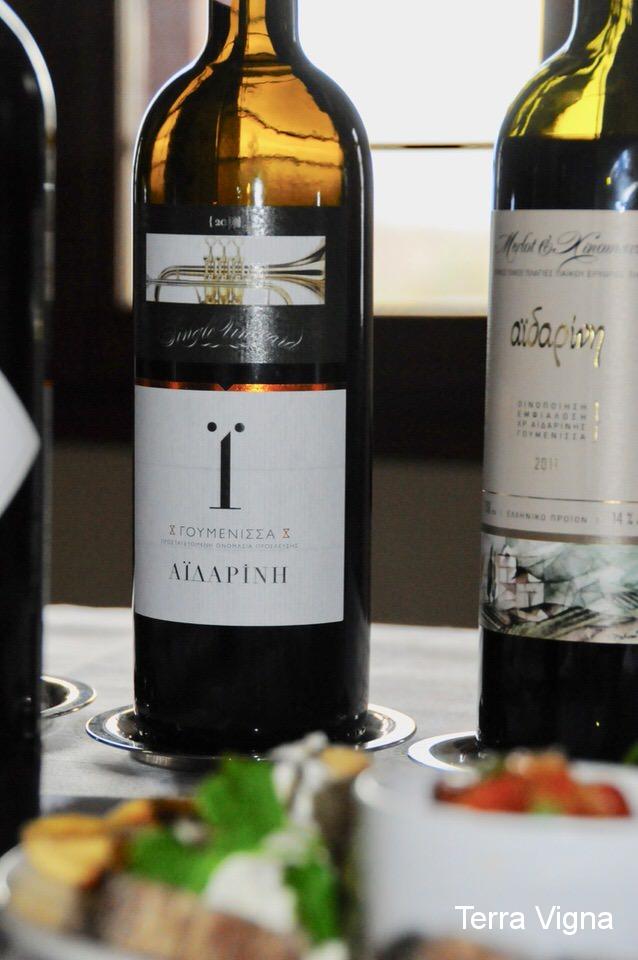
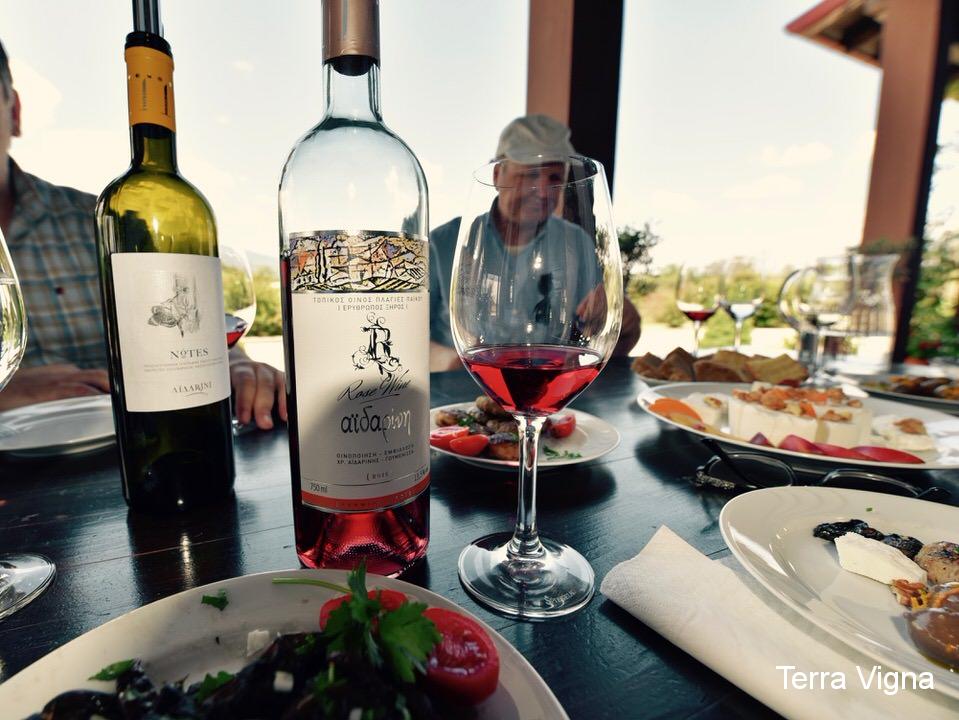
Facebook Comments